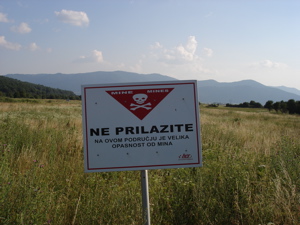 Watch out for the Trams
Watch out for the Trams
Renting a car in Zagreb can be a confusing task. If arriving in Zagreb by train and hoping to rent a car, you may think that asking at the station’s information desk would be a good idea to get information about a car rental. You would be wrong.
There are a few different information desks in the Zagreb train station and when I arrived, bleary eyed from the overnight train ride from Germany, each one told me a different direction to go to rent a car. I chose to follow the directions that seemed simplest, and after walking a few blocks one way, then a few blocks back the other way, I finally found a car rental agency.
Car rentals in Zagreb are usually booked through the hotel you’re staying in and their offices are often part of the hotel building. If you’re walking the streets trying to find a place to rent a car, your best bet will be to head toward a Sheraton or Marriott. One corner of the building will probably be devoted to cars, the rest of the hotel encased in privacy glass.
Unlike American car rental agencies, you do not have to be 25 years old to rent a car in Zagreb. You do have to have had your driver’s license for at least two years and have a credit card to swipe as a deposit. Lucky for me I got a credit card when I was a wee lad of 18, and a driver’s license years before that, so I was all set.
Except that I had to wait for the car. At these hotel car rental agencies, very few of the cars are on hand. They’re kept somewhere hidden and when you walk in and request a car, they have to tap at their keyboards for a minute before they can tell you whether or not they’ve got what you’re looking for. This process allows time for all sorts of marketing research questions that may or may not influence the rate you are later offered. I chose to play the part of a poor (but automotively responsible) college student, who couldn’t afford to pay the higher prices at the other car rental places. This was mostly true (except for the responsibility part, as you will see shortly) and we agreed on a price. I’m not sure if trying to bargain with them would have gotten me anywhere. Like most things in Croatia, the initial asking price was so low I just accepted it. Still, before he quoted me a price, he buttered me up, telling me that he was going to give me a “special price on this trip.”
I proffered my Visa card, signed the contract and then began to wait. My car was somewhere WAY off-site, so I went out and walked around Zagreb and got the traditional Croatian breakfast of pita, a pastry filled with cheese, in the main square.
I was renting the car for a one-way drive from Zagreb to Split. The trip takes about 7 hours. I asked for five days. My trip, however, was nearly cut short after two blocks. It would have been a grand total of about 45 seconds in the car if not for good brakes, an audible scream and those four-leaf clovers I keep with me at all times.
Which brings us to the most useful advice I can give you about renting a car in Zagreb. When in Zagreb, know that streetcars and trams do not follow the rules of traffic that the rest of the world lives by. They pretty much follow the tracks. Even if those tracks cause the tram to approach from a direction that your eyes aren’t trained to scan before merging onto the street.
I pulled forward from the line, only to realize that I was in the path of an oncoming tram. Swerving and slamming on the brakes, I maneuvered the car so that the train went by about 6 inches from the front bumper. I looked over my shoulder toward the rental agency, but no one had seen the close call. I drove away before anyone could come out and take the keys from me, insurance forms secure in my sweaty palms.



 The blogs were abuzz last summer when RyanAir, the Irish no-frills, low-fare airline announced service to Istria from London’s Stansted Airport. This would not only allow travelers to get from the U.K. into northern Croatia for next to nothing, but it would also provide a link for Croatian businesses to establish relationships with London clients.
The blogs were abuzz last summer when RyanAir, the Irish no-frills, low-fare airline announced service to Istria from London’s Stansted Airport. This would not only allow travelers to get from the U.K. into northern Croatia for next to nothing, but it would also provide a link for Croatian businesses to establish relationships with London clients.






 Watch out for the Trams
Watch out for the Trams